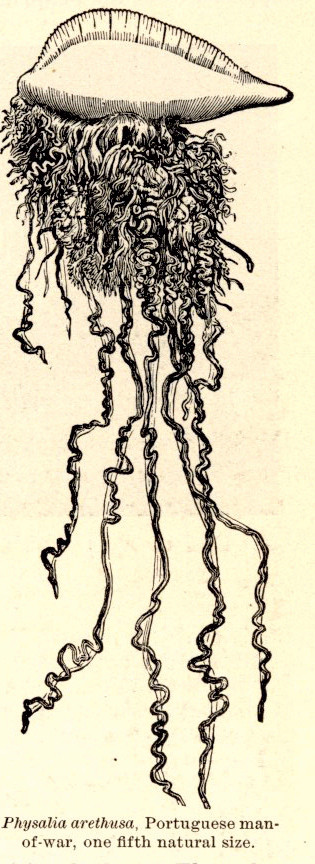For over 200 years, biology textbooks taught that this deadly “jellyfish”—the Portuguese man o’ war—was a single, notorious species drifting through the world’s oceans. You’ve probably heard the warning: “Don’t touch those blue bubbles!”—simple advice that turns out to be wrapped in far more scientific complexity than we ever imagined.
A groundbreaking study has revealed that the Portuguese man o’ war is actually four, possibly even five, distinct species that never interbreed. All of them, however, are equally dangerous, armed with tentacles capable of delivering some of the ocean’s most painful stings.
And these creatures don’t just haunt Indonesian beaches. They are widespread across the globe, from the Atlantic coasts of the Americas to Australia, New Zealand, Europe, and Asia’s tropical shorelines.
Not Really a Jellyfish
Despite the name, the man o’ war isn’t a true jellyfish. It’s a floating colony made up of tiny specialized animals that stick together to function as a single organism. Some catch prey, others digest it, some handle reproduction, and a few keep the gas-filled float—its signature translucent “sail”—upright and catching the wind.

What makes them so dangerous is their tentacles, which can trail up to nine meters (almost 30 feet) behind them. Along each filament, thousands of microscopic stinging capsules—nematocysts—lie in wait. They fire like tiny poisoned harpoons if you brush against them.
A Painful Encounter
Most stings cause agonizing pain, swelling, red welts, and sometimes muscle cramps that can last for hours. Although fatalities are extremely rare, they can happen if a person has a severe allergic reaction (anaphylaxis) or goes into shock from the intense pain. Anyone who experiences difficulty breathing, severe dizziness, or swelling after being stung should get medical help immediately.
The Species You’ll Meet
The latest study, published in Current Biology, used DNA from 151 samples and thousands of photos from citizen scientists to sort these creatures into separate lineages.
Physalia physalis is the most famous and widespread species, often spotted along beaches in the Atlantic, Pacific, and Indian Oceans—including Florida, the Caribbean, Western Europe, Australia, and Southeast Asia. It has a bright blue float like a little sail and the longest tentacles, making it responsible for most injuries.
Physalia utriculus, smaller and rounder, is common off Australia and New Zealand. Its tentacles are shorter, but don’t let that fool you—its sting still packs a punch.
Physalia megalista drifts mainly through the Atlantic Ocean. It has a taller, more purple-tinted float and was long thought to be just a variation of P. physalis.
Physalia minuta was only recently described, discovered south of New Zealand. It’s the smallest species, with a nearly transparent float that can be almost invisible in the water, yet it carries venom just as potent.
Interestingly, even the direction their sail leans—tilting left or right—turns out to be genetically inherited rather than random. That genetic “steering” helps the wind and currents separate different species over thousands of years.
Why It Matters
Understanding these distinctions isn’t just about giving them fancier names. It helps scientists and coastal safety teams predict which species are most likely to wash up, how dangerous their stings can be, and whether different toxins might one day be used for medicines.
In fact, compounds from P. physalis venom are already being studied for their potential in treating pain and neurological conditions. And because each colony contains carbon monoxide gas, knowing how many different species exist is also important for measuring how ocean life contributes to global carbon cycles—an unexpected climate connection for such a small creature.
Watch Your Step
In Indonesia, Portuguese man o’ war frequently strand along the southern coasts of Java, Bali, Lombok, and the Nusa Tenggara islands, particularly during strong winds and storms. But you’ll find them almost everywhere warm currents go, from Hawaii to Spain, from the Gulf of Mexico to the beaches of Japan.
No matter where you are, if you see a shimmering blue or purple float bobbing on the waves—or lying lifeless on the sand—give it plenty of space. Even a dead man o’ war can still sting you badly.
This discovery reminds us: the ocean isn’t just a postcard backdrop. Even a drifting blue bubble can be a window into the hidden complexity—and danger—of marine life we’re only just beginning to understand.



















